Earthquakes, convenience, and cost drive the replacement of rigid sprinkler connections with flexible hose
It’s important—and, at times, pretty tricky—to put fire sprinkler heads in the right spot. Installers often rely on a series of precisely-measured hard pipes and fittings to connect heads to their supply of water. But in the last few decades, manufacturers have offered an alternative in the form of a flexible metal hose assembly.
In this article, we take a look at the issues propelling the adoption of flexible fire sprinkler drops, explaining how they work with suspended ceilings, why they install faster than sprinkler armovers, and how they help installers protect sprinkler systems against earthquakes.
Need some flexible fire sprinkler drops now? Compare and shop our selection of FlexHead and SprinkFLEX flexible sprinkler head drops by clicking here.
False or suspended ceilings are often served well by flexible fire sprinkler drops
The interior of a modern office building isn’t easy to look at: with features like cubicles, large fluorescent lights, and off-white ceiling panels, many of these buildings place function well before form. But behind those ugly ceiling panels lies an even more unsightly network of plumbing, electrical work, and fire protection piping that undergirds the safety and efficiency of the modern workplace.
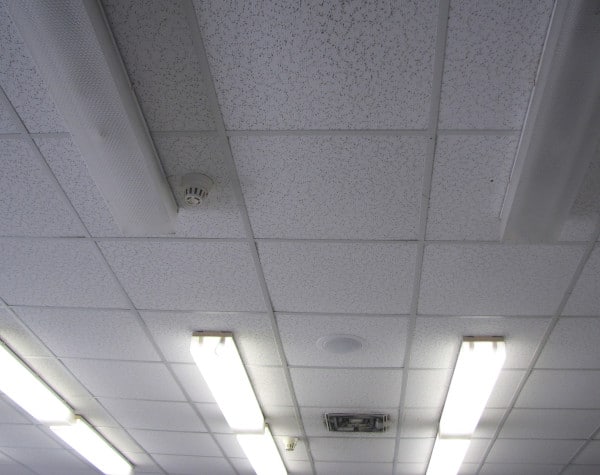
These panels form a secondary ceiling known as a dropped, false, or suspended ceiling. Suspended ceilings are a staple in a wide range of buildings. Offices, schools, and hotels employ false ceilings largely for convenience: engineers and architects use them when they need a cost-effective, low-effort way to conceal necessary infrastructure.
But as widespread as they are, suspended ceilings can present problems for fire sprinkler systems. Because fire sprinklers often make their way through ceiling panels using a series of pipes and fittings, installers may find the precise placement of sprinkler heads elusive. And suspended ceilings tend to move after they’re put in place, due to renovations or normal “ceiling creep,” causing sprinklers to slowly become misaligned.
That’s a potentially serious problem: as we’ve covered in an article on selecting escutcheons—the plates that rest between sprinkler heads and the ceiling—openings near sprinkler heads can allow heat to enter above-ceiling spaces rather than gathering around the sprinklers, causing them to deploy dangerously late.
Flexible drops solve this problem. With flexible tubes, these assemblies connect rigid branch lines—the pipes supplying water directly to sprinklers—to sprinkler heads in the simplest manner possible. And while traditional piping remains rigid, these flexible tubes allow sprinklers to move along with suspended ceilings. Benefits like these have made flexible drops common in large-scale fire sprinkler installations in malls, airports, and other sizable buildings. Some models, like Victaulic’s VicFlex, are even carefully tailored to the ceilings used in semiconductor manufacturing or research laboratories.
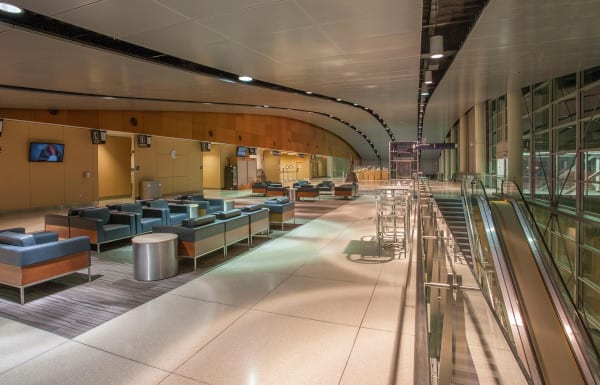
Flexible fire sprinkler drops install far faster than rigid sprinkler armovers
Pendent fire sprinkler heads often connect to branch pipes using a piping arrangement called a sprinkler armover (also called a return bend). Sprinkler armovers use a tee, along with a series of elbows and solid pipes, to properly position pendent sprinklers.
Fire code may require these assemblies for some fire sprinkler systems to prevent the accumulation of water, dirt, or moisture—as when ponds supply sprinkler systems, or when using dry-pipe systems. In short, sprinkler armovers resist sediment and moisture build-up, make it easier to precisely place heads, and can simplify some remodels.
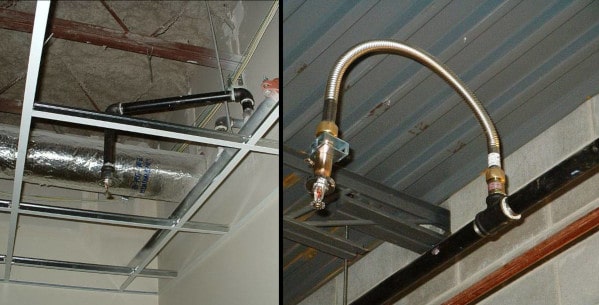
But standard sprinkler armovers, while common, can also be costly. One return bend may consist of several short pipes, elbows, and other fittings, making installation a labor-intensive process. That’s where fire sprinkler drops come in: with a complete and flexible assembly, installers can replace these involved piping arrangements with a single, simple device. Common sizes range from two feet (24″) to six feet (72″), meaning flexible drops can reach from branch lines to drop ceilings with ease—and when combined with the positioning brackets, installers can place the head in a precise location with far less effort.
These benefits can amount to significantly reduced labor costs. While these assemblies do carry a higher material cost, sprinkler fitters can typically mount far more of them in less time. Some such assemblies, like VicFlex, connect to fire sprinkler systems using grooved couplings—a known time-saver in other piping applications. The reduced labor hours derive from the ease of initial installation as well as the final adjustments needed for accurate sprinkler height. The video below compares flexible hose and hard-piped sprinkler armover installation side by side:
Some estimates say that installers can place four flexible drops in the time required to place a single hard-pipe assembly. Anvil International, the manufacturer of FlexDrop-brand drops, estimates that these time savings increase when installing flexible drops as part of a retrofit. And other estimates suggest that the total cost of such installations are comparable, offering reduced installation speed for the same price.
Seismic concerns favor the use of flexible fire sprinkler drops over sprinkler armovers
Earthquakes have caused catastrophic failures in some fire sprinkler systems. Sprinkler heads collide with ceilings, fittings break as pipes bend, and bolts supporting pipes slip or snap. Damage ranges from relatively minor wear on system components to flooding and, when systems fail, fires that spread unchecked.
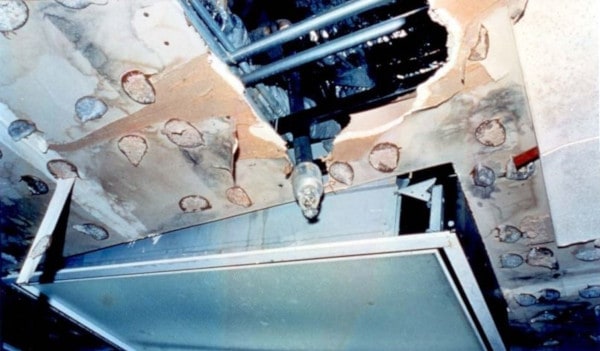
Pipes connected directly to sprinklers fail at a striking rate. The Network for Earthquake Engineering Simulation subjected an NFPA-compliant sprinkler system to extreme vibrations to test the issue. Using a large shake table—a device that approximates an earthquake, as the video below shows—researchers rocked an entire building back and forth to determine how systems on the fourth and fifth floors would respond during a seismic event.
These tests and further research found that sprinkler armovers and ceiling drops are the most vulnerable points within fire sprinkler systems. But flexible fire sprinkler drops significantly reduced contact between pipes and the ceiling—a major cause of damage in such scenarios. FlexHead drops, for example, were the first drop assemblies certified to the standards of the International Code Council (ICC), demonstrating an ability to endure severe conditions without damaging the sprinkler system or ceiling.
During an earthquake, fire sprinkler drops allow heads to move with the ceiling. If sprinkler heads stay in place—as they do with inflexible sprinkler armovers—rigid ceiling tiles may block their spray in a fire event. With added flexibility, those same heads can track the movement of the ceiling and continue to operate as expected during a fire.
Installers choose between flexible assemblies and extra-large holes around sprinkler heads
To accommodate seismic motion, sprinkler armovers require extra-large holes where the sprinkler heads protrude from the ceiling. Engineering standards require anywhere from an extra quarter-inch to an inch of clearance around drops that aren’t rigidly braced. The requirements vary with the type and seismic risk of the building, but the American Society of Civil Engineers (ASCE) requires these measures in four categories of structures:
- Category C: Occupancy Group IV (buildings critical for emergencies and defense) and Occupancy Group I (low hazard buildings with limited or no human occupancy) subject to moderate shaking; Groups I, II (most buildings, like homes), and III (buildings with substantial numbers of people) subject to severe shaking
- Category D: Buildings not near major faults expected to experience severe and destructive shaking
- Category E: Group I, II, or III buildings near major active faults
- Category F: Group IV buildings near major active faults
For the rules governing the earthquake-ready joining of sprinkler heads to branch lines, installers turn to NFPA 13: Standard for the Installation of Sprinkler Systems. NFPA 13’s requirements—which vary from two inches of required clearance to four inches depending on pipe size—are even more demanding than ASCE, although the code makes an exception for pipes passing through frangible (fragile) elements like gypsum board.
Contractors typically install oversized escutcheons to cover the required gap. But because flexible drops don’t require this extra spacing, architects can use standard escutcheons, removing an extra (and sometimes unsightly) part from the equation.
From the 2019 edition of NFPA 13
18.4.11.1 Where sprinklers are installed using flexible sprinkler hose, clearance for the sprinkler shall not be required.
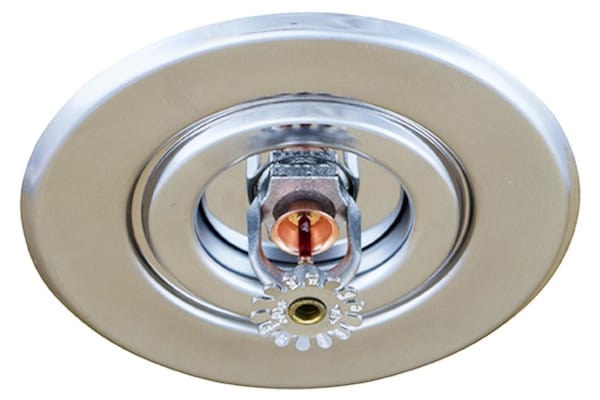
Stay tuned for our need-to-know look at the proper selection of flexible sprinkler drops and their installation issues
Sprinkler armovers remain a fixture of the fire protection industry—but with comparable costs to contractors and a host of benefits, it’s not hard to imagine a future where flexible fire sprinkler drops become the go-to choice for installers. In part two of this series, we’ll take a look at selection and fire code concerns for these versatile products, providing the background needed to make informed choices between brand-name drops like FlexHead and VicFlex.
QRFS carries two lines of flexible fire sprinkler drops from New Hampshire’s Anvil International: FlexHead and SprinkFLEX. Both brand-name assemblies feature braided stainless-steel hose and approvals from UL and FM.
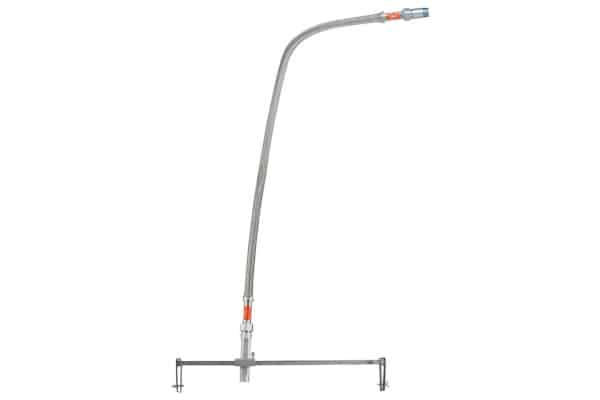
Our supply of Flexhead and SprinkFLEX drops are designed to fit standard fire sprinklers sizes in a variety of lengths, including:
- FlexHead assemblies in 24″, 36″, and 48″ lengths for 3/4″ sprinklers
- SprinkFLEX assemblies in 28″, 40″, 48″, and 71″ lengths for 1/2″ heads
- 59″ SprinkFLEX assemblies for both 1/2″ and 3/4″ fire sprinklers
Need to know more about replacing sprinkler armovers with flexible fire sprinkler drops? Call us at +1 (888) 361-6662 or email support@qrfs.com.
This blog was originally posted at blog.qrfs.com. If this article helped you get a handle on sprinkler drop assemblies, check us out at Facebook.com/QuickResponseFireSupply or on Twitter @QuickResponseFS.


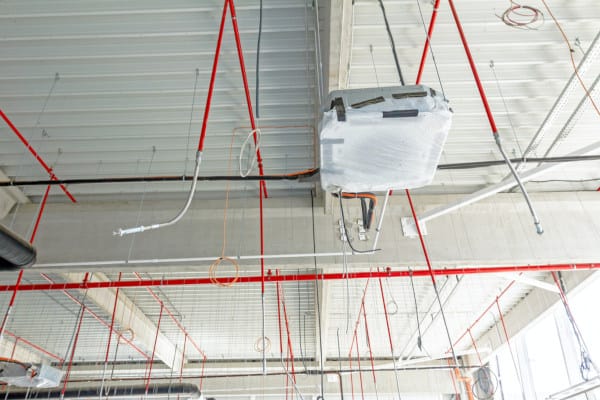
Dear Sir,
There is a creeped ceiling where hard pipe cannot be installed because the slope is steep and hard pipe cannot be used, so I suggest flexible pipe to cover the creeped ceiling, like these:
Sprinkler pipe to sprinkler head
2- The spacing between sprinkler pipes itself accommodates creep, as stated.
Would you please advise if there’s any available materials to cover my requirement, if it’s available, is it listed for both cases, and what’s the maximum length of the flexible pipes?
Mohammed — For system application, standards, and code questions like this, you can try our Ask a Fire Pro service. Click the link to submit your question with some information about your building and system, and a fire protection professional will provide an answer based on best practices, standards, and codes. Our pros include AHJs, contractors, engineers, and code experts with 150+ years of combined experience!